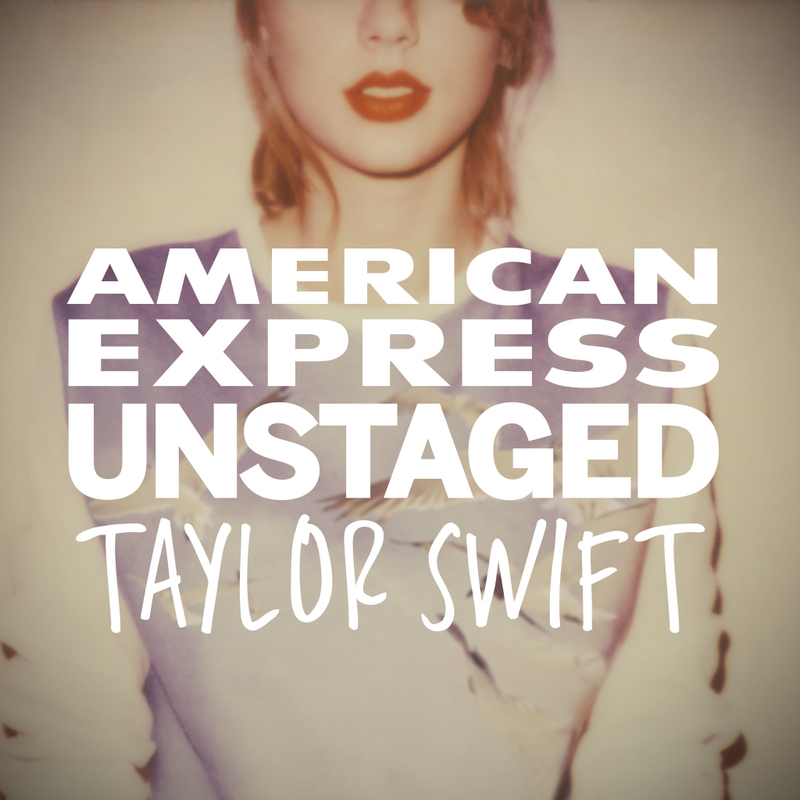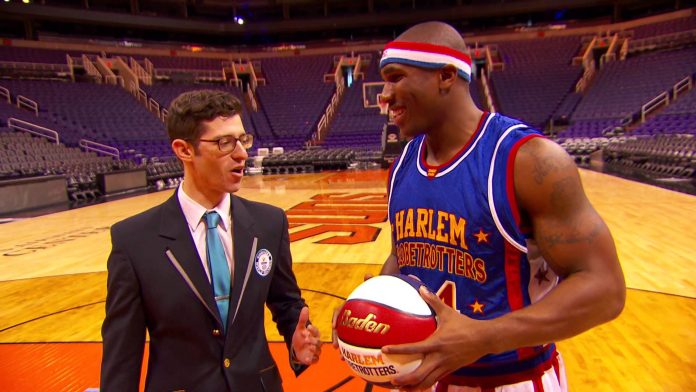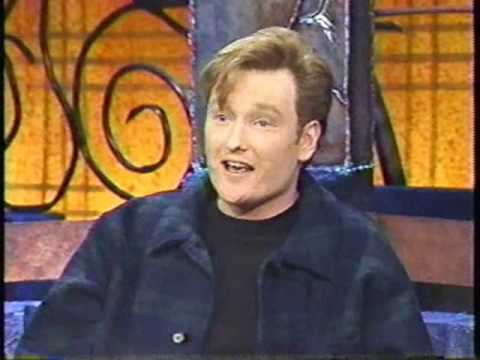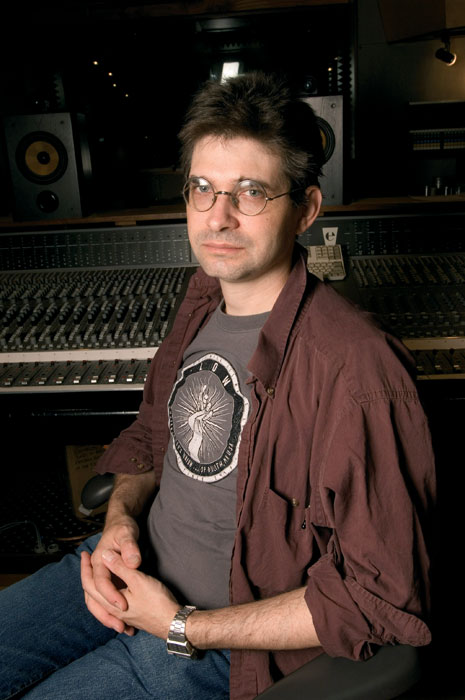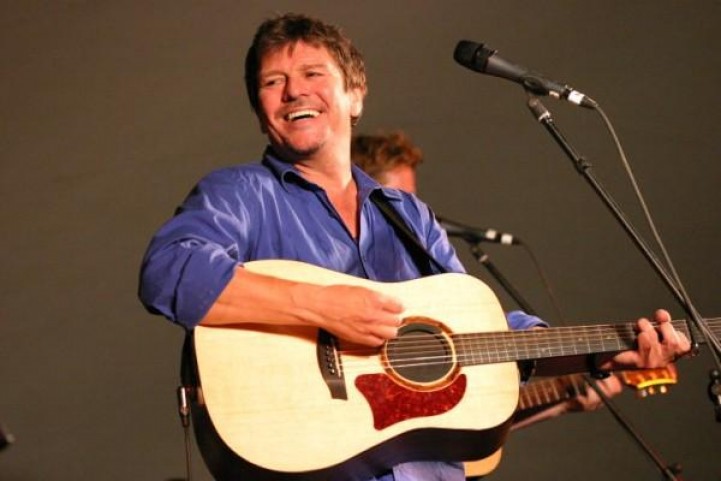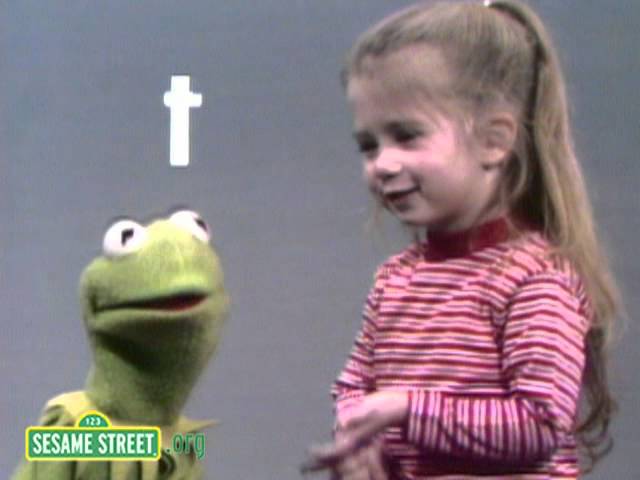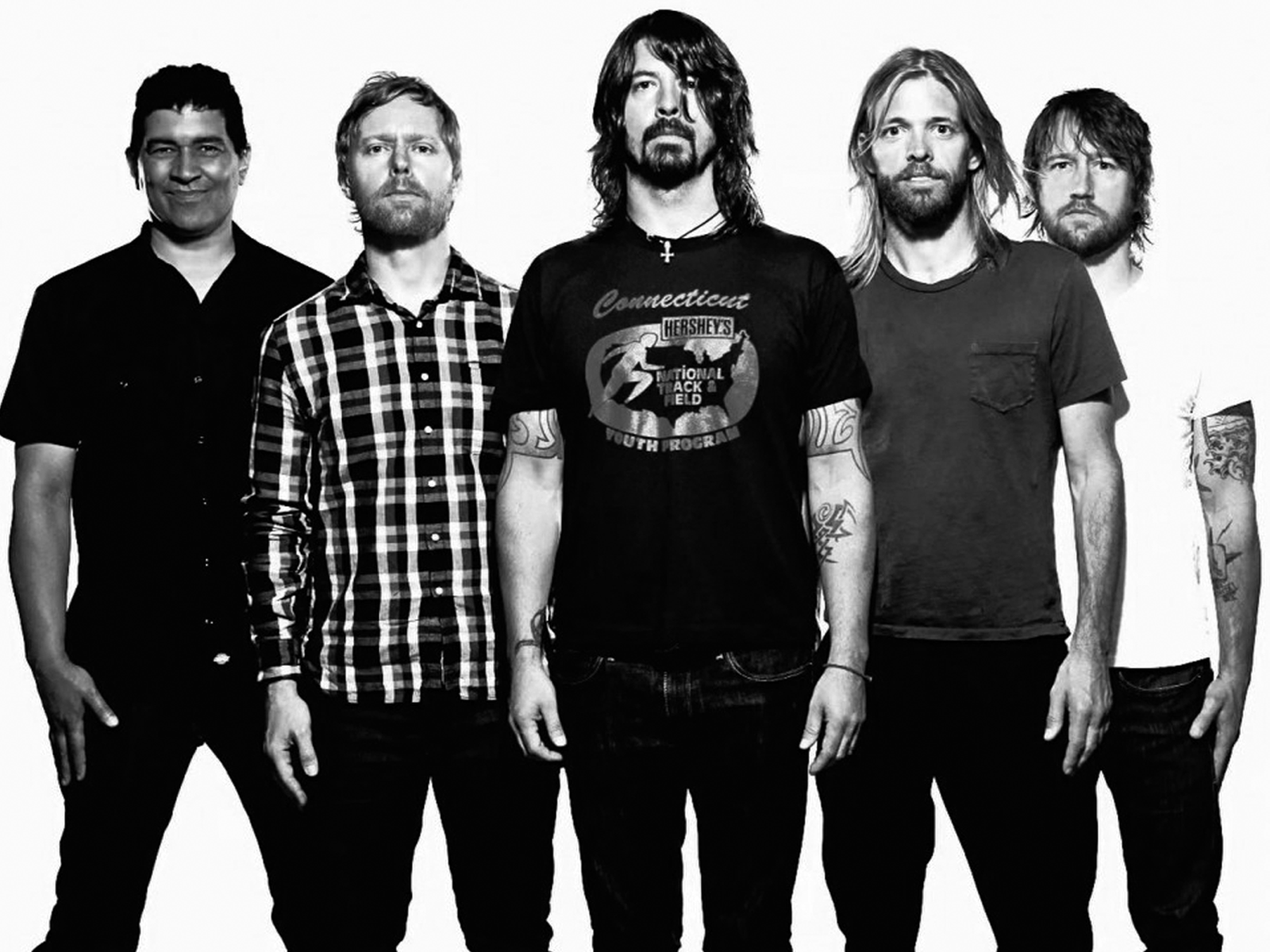Steve Albini is the producer (he prefers the term “recording engineer”) behind several thousand records, as well as being in his own band Shellac. In 1993, he published The Problem with Music, an essay detailing his belief that the major label-dominated industry of the time was inefficient and exploited musicians. Last week, he gave the keynote address at Melbourne’s Face the Music conference in which he celebrated the fact the internet had both dismantled this system and addressed its inequalities, and everything is getting better:
I’m going to first explain a few things about myself. I’m 52 years old, I have been in bands continuously, and active in the music scene in one way or another since about 1978. At the moment I’m in a band, I also work as a recording engineer and I own a recording studio in Chicago. In the past I have also been a fanzine writer, radio club DJ, concert promoter and I ran a small record label. I was not terribly successful at any of those things, but I have done them, so they qualify as part of my CV.
I work every day with music and with bands and I have for more than 30 years. I’ve made a couple thousand records for independent bands and rock stars, for big labels and small ones. I made a record two days ago and I’ll be making one on Monday when I get off the plane. So I believe this puts me in a pretty good position to evaluate the state of the music scene today, as it relates to how it used to be and how it has been.
We’re all here to talk about the state of the music scene and the health of the music community. I’ll start by saying that I’m both satisfied and optimistic about the state of the music scene. And I welcome the social and technological changes that have influenced it. I hope my remarks today will start a conversation and through that conversation we can invoke an appreciation of how resilient the music community is, how supportive it can be and how welcoming it should be.
I hear from some of my colleagues that these are rough times: that the internet has cut the legs off the music scene and that pretty soon nobody will be making music anymore because there’s no money in it. Virtually every place where music is written about, there is some version of this troubling perspective. People who used to make a nice income from royalties, they’ve seen the royalties dry up. And people who used to make a living selling records are having trouble selling downloads as substitute for records, and they no longer make records.
So there is a tacit assumption that this money, lost money, needs to be replaced and a lot of energy has been spent arguing from where that money will come. Bitchiness about this abounds, with everybody insisting that somebody else should be paying him, but that he shouldn’t have to pay for anybody else. I would like to see an end to this dissatisfaction.
It’s worthwhile to remember from where we’ve come. From where this bitchiness originates. In the 1970s through the 1990s, the period in which I was most active in bands in the music scene – let’s call this the pre-internet era. The music industry was essentially the record industry, in that records and radio were the venues through which people learned of music and principally experienced it. They were joined by MTV and videos in the 80s and 90s, but the principle relationship people had with music was as sound recordings. There was a booming band scene and all bands aspired to getting recorded, as a mark of legitimacy.
But recording was a rare and expensive enterprise, so it wasn’t common. Even your demo tape required considerable investment. So when I started playing in bands in the 70s and 80s most bands went through their entire lifecycle without so much as a note of their music ever being recorded.
Now I’m going to describe the scene as I observed it in America, but I understand that most of the structures and conditions I observed have parallels in other markets. Maybe somebody from my generation can add the local Aussie colour to my comments – I prefer them shouted in as thick an accent as you can muster.
As a yardstick for the economics of the day or for the era, in 1979 you could buy a 45rpm single for a buck, a new album for $5, go see a club gig for $1 or a stadium gig for $7. I know these things because I still have some old ticket stubs and price stickers on my records. Note the relative parity between the live show costs and the recorded music costs. A gradual inflation of prices remained under way through the 90s, making recorded music more expensive, though it remained the principal means of experience.
The whole industry depended on these sales, and sales depended on exposure. Bands on big labels toured, essentially to promote their recordings. And the labels provided promotional and logistical support to keep the bands on the road. This supported a network of agents and managers and roadies and promotional staff, so the expense was considerable.
Retail outlets also offered special placements and promotion: displays, posters, mentions in print ads, giveaways, trinkets and what were called end cap displays. Record labels paid handsomely for these promotions and the stores used the sale of these promotions as additional income. Chain stores especially relied on corporate chain-wide promotions, regardless what the stores might think their local clientele might like. It wasn’t uncommon to see big displays of hair metal bands in urban outlets where they couldn’t sell a single stick but the labels had paid for their utility, so up they went.
Radio stations were enormously influential. Radio was the only place to hear music from any people and record companies paid dearly to influence them. Direct payola had been made illegal but this was a trivial workaround. Record pluggers acting as programming consultants were the middlemen. They paid radio stations for access to their programmers and conducted meetings where new records were promoted.
These promotional offers were quite lucrative. But their metrics depended on radio stations recording that they had added the records to their playlist. To satisfy this requirement and keep the promotional money flowing, radio stations often played tiny fragments of songs jumbled one after the other in any incomprehensible flow during late-night programming hours, to satisfy the programming requirement that they add songs to their playlist. Popular radio stations also staged mammoth concerts, often for free or for nominal cover featuring bands that the labels were promoting. These unpaid radio gigs were a drag on their touring income but the promotional value was presumed to be worth it.
Journalists and editors who could place reviews, program directors and independent DJs who could add records to playlists or played in nightclubs, were subject to much buttering up. Promotional trinkets and advance copies of records were sent their way. Sometimes by the box. Presumably these were listening and file copies. But they were actually a bribe. These promotional copies were immediately sold secondhand to record stores and it was not uncommon for such stores to be overstocked with a new release prior to its official release as a result. My wife worked in a record store that bought records secondhand in the 90s. And their biggest repeat customers, by a long shot, were the people on these label promo lists. The staff at her store kept a tally for awhile and the editor of the local weeklies music section made a comfortable second income amounting to a $1,000 or more a month from selling these promo copies.
So it was a leaky system, riddled with inefficiencies, but a lot of people made a living through it. Record store owners, buyers, employees, ad agencies, designers, club owners, label reps, A&R, producers, recording studios, publicists, lawyers, journalists, program directors, distributors, tour managers, booking agents, band managers, and all the ancillary services they required: banking, shipping, printing, photography, travel agencies, limos, spandex wardrobe, cocaine dealers, prostitutes. Because of this great bulk of the industry needed to sustain itself. Every facet of the industry was tailored to this need.
The most significant bit of tailoring was an accounting trick called recouping costs. The costs of making a record wasn’t borne by the record label, except initially. Those costs were recouped or taken out of the income the band might otherwise run as royalties. The same was true of all those promo copies, posters, radio pluggers and payola men, producers, publicists, tour support, 8×10 glossies, shipping, freight – basically anything that could be associated with a specific band or record was ultimately paid for by the band, not by the record label.
As the label shifted from vinyl to CD as the dominant format, the labels could easily sell the CD as a convenient, compact, trouble-free way to listen to music. The profit margin exploded and the money got stupid. Retails costs of a CD was half again or double more than an LP but the manufacturing, shipping and storage costs were a tiny fraction. The labels even used vinyl’s legacy as a tool to increase this profit margin by charging bands for unique packaging, despite the fact that CD packaging was designed to be standardised. Or pre-emptively charging back for broken CDs at a rate implying that someone was attacking the inventory with an axe.
In the end the bands operating under this system earned very little from their record sales, unless they were monumental stars. Often enough bands would conduct their entire careers with a label and never reach the point where they had sufficiently recouped to get paid anything at all. Now the label made its per-piece profit on every record sold. And could recoup the cost of any records unsold. And all those other people got paid using the money that would have otherwise gone to the bands as royalties. Unsurprisingly, those other people also got paid pretty well. It stands to reason that if the label is paying you with someone else’s money, the label doesn’t need to care how much you charge.
During the 90s there was something of an arms race to see who could write the biggest deal. That is, the deal with the most money being spent on the band’s behalf. In a singularly painless contest the money would either be paid to the band as a royalty, which would take that money out of the system and put it into things like houses and groceries and college educations. Or it could be paid to other operators within the industry, increasing the clout and prestige of the person doing the spending. It’s as if your boss, instead of giving your paycheck to you, could pay that money to his friends and business associates, invoking your name as he did. Since his net cost was the same and his friends and associates could return the favour, why would he ever want to let any of that money end up in your hands? It was a system that ensured waste by rewarding the most profligate spendthrifts in a system specifically engineered to waste the band’s money.
Now bands existed outside that label spectrum. The working bands of the type I’ve always been in, and for those bands everything was always smaller and simpler. Promotion was usually down to flyers posted on poles, occasional mentions on college radio and fanzines. If you had booked a gig at a venue that didn’t advertise, then you faced a very real prospect of playing to an empty room. Local media didn’t take bands seriously until there was a national headline about them so you could basically forget about press coverage. And commercial radio was absolutely locked up by the payola-driven system of the pluggers and program directors.
International exposure was extraordinarily expensive. In order for your records to make it into overseas hands you had to convince a distributor to export them. And that was difficult with no means for anyone to hear the record and decide to buy it. So you ended up shipping promotional copies overseas at a terrific expense, never sure if they would be listened to or not.
The one exception to this was the brilliant BBC DJ John Peel. He listened religiously to every single record he received in the mail, devoting hours of every day to the task. I sent him a copy of the first album I ever made and not only did he play the record on air, he sent me back a postcard with a personal remembrance of Chicago, of visiting a matron aunt as a child in Evanston, the suburb where my post office box was kept. I treasured that note as the first indication that John Peel was a great man.
So these independent bands had to be resourceful. They’d built their own infrastructure of independent clubs, promoters, fanzines and DJs. They had their own channels of promotion, including the beginnings of the internet culture that is so prevalent today – that being bulletin boards, and newsgroups. These independent bands even made their own record label. Some were collectives and those that weren’t were likely to operate on a profit-sharing basis that encouraged efficiency, rather than a recoupable patronage system that encouraged indulgence.
That’s where I cut my teeth, in that independent scene full of punks and noise freaks and drag queens and experimental composers and jabbering street poets. You can thank punk rock for all of that. That’s where most of us learned that it was possible to make your own records, to conduct your own business and keep control of your own career. If a bunch of pimply glue sniffers could do it, we reasoned, then anybody could.
The number of records released this way was incredible. Thousands of small releases made their way into the “mom and pop” independent speciality stores, which then provided a market for independent distribution. It was the beginnings of an alternative to the label paradigm. It was cumbersome and slow but it was more efficient than a shotgun approach with the big labels, whose answer to every problem was to spend more of the band’s money on it.
It was the beginning of what we would call the peer network. By mid-90s there were independent labels and distributors moving millions of dollars of records and CDs. And there was a healthy underground economy of bands making a reasonable income owing to the superior efficiencies of the independent methods. My band, as an example, was returned 50% of the net profit on every title that we released through our record label. I worked it out and that earned us a better per-piece royalty than Michael Jackson, Bruce Springsteen, Prince, Madonna or any other superstar operating concurrently. And we were only one of thousands of such bands.
So, that was the system as it was. That’s what we lost when the internet made everything available everywhere for free. And make no mistake about it, we have lost it. There is still an independent label network but it’s a slim fraction of what it was. The labels continuing to survive do so by supplying niche music to a discerning audience. And because they have been steeled in the art of efficiency their constitution allows them to scale everything to suit the remaining demand.
You may have noticed that in my description of the mass market music scene and the industry as it was pre-internet I made little mention of the audience or the bands. Those two ends of the spectrum were hardly considered by the rest of the business. Fans were expected to listen to the radio and buy records and bands were expected to make records and tour to promote them. And that was about all the thought either were given. But the audience was where all the money came from and the bands were where all the music came from.
Through the internet, which more than anything else creates access to things, limitless music eventually became available for free. The big record companies didn’t see how to make money from online distribution so they effectively ignored it, leaving it to the hackers and the audience to populate a new landscape of downloading. People who prefer the convenience of CDs over LPs naturally prefer downloaded music even more. You could download it or stream it or listen from YouTube or have your friends on message boards or acquaintances send you zip files. In the blink of an eye music went from being rare, expensive and only available through physical media in controlled outlets to being ubiquitous and free worldwide. What a fantastic development.
There’s a lot of shade thrown by people in the music industry about how terrible the free sharing of music is, how it’s the equivalent of theft, etc. That’s all bullshit and we’ll deal with that in a minute. But for a minute I want you to look at the experience of music from a fan’s perspective, post-internet. Music that is hard to find was now easy to find. Music to suit my specific tastes, as fucked up as they might be, was now accessible by a few clicks or maybe posting a query on a message board. In response I had more access to music than I had ever imagined. Curated by other enthusiasts, keen to turn me on to the good stuff; people, like me, who want other people to hear the best music ever.
This audience-driven music distribution has other benefits. Long-forgotten music has been given a second life. And bands whose music that was ahead of its time has been allowed to reach a niche audience that the old mass distribution failed to find for them, as one enthusiast turns on the next and this forgotten music finally gets it due. There’s a terrific documentary about one such case, the Detroit band Death whose sole album was released in a perfunctory edition in, I believe, 1975 and disappeared until a copy of it was digitised and made public on the internet. Gradually the band found an audience, their music got lovingly reissued, and the band has resurrected, complete with tours playing to packed houses. And the band are now being allowed the career that the old star system had denied them. There are hundreds of such stories and there are speciality labels that do nothing but reissue lost classics like that once they surface.
Now look at the conditions from a band’s perspective, the conditions faced by a band. In contrast to back in the day, recording equipment and technology has simplified and become readily available. Computers now come pre-loaded with enough software to make a decent demo recording and guitar stores sell microphones and other equipment inexpensively that previously was only available at a premium from arcane speciality sources. Essentially every band now has the opportunity to make recordings.
And they can do things with those recordings. They can post them online in any number of places: Bandcamp, YouTube, SoundCloud, their own websites. They can link to them on message boards, Reddit, Instagram, Twitter and even in the comment streams of other music. “LOL,” “this sucks,” “much better,” “death to false metal,” “LOL”. Instead of spending a fortune on international phone calls trying to find someone in each territory to listen to your music, every band on the planet now has free, instant access to the world at its fingertips.
I cannot overstate how important a development that is. Previously, in the top-down paradigm allowed local industry to dictate what music was available in isolated or remote markets, markets isolated by location or language. It was inconceivable that a smaller or independent band could have market penetration into, say, Greece or Turkey, Japan or China, South America, Africa or the Balkans. Who would you ask to handle your music? How would you find him? And how would you justify the business and currency complications required to send four or five copies of a record there?
Now those places are as well-served as New York and London. Fans can find the music they like and develop direct relationships with the bands. It is absolutely possible – I’m sure it happens every day – that a kid in one of these far-flung places can find a new favourite band, send that band a message, and that singer of that band will read it and personally reply to it from his cell phone half a world away. How much better is that? I’ll tell you, it’s infinitely better than having a relationship to a band limited to reading it on the back of the record jacket. If such a thing were possible when I was a teenager I’m certain I would have become a right nuisance to the Ramones.
A couple of years ago my band mounted a tour of eastern Europe. We played all the hot spots: the Czech Republic, Poland, Croatia, Slovenia, Macedonia, Bulgaria, we made it as far as Istanbul, Turkey. It was a magical experience, playing in front of audiences who were relatively unjaded by the routine of touring bands and we were welcomed like friends. We played to full houses at the same size venues as the rest of Europe. The same sizes as we would play here in Australia. And the audiences seem equivocally familiar with our music. The key difference being that most of the places have literally never sold a single record. Essentially 100% of our exposure had been through informal means over the internet or hand-to-hand.
On that trip we established contacts with local promoters and arts organisations and audiences developed an appetite for our music and we have since sold quite a few records into the region. Our next tour through the region was easier as a result and we’re going back to Istanbul this spring, using contacts made on that first exploratory trip. I expect to have a marvellous time.
In short, the internet has made it much easier to conduct the day-to-day business of being in a band and has increased the efficiency. Everything from scheduling rehearsals using online calendars, to booking tours by email, to selling merchandise and records from online stores, down to raising the funds to make a record is a new simplicity that bands of the pre-internet era would salivate over. The old system was built by the industry to serve the players inside the industry. The new system where music is shared informally and the bands have a direct relationship to the fans was built by the bands and the fans in the manner of the old underground. It skips all the intermediary steps.
Bands now have default control of their exposure. It’s no longer necessary to pay people to pay other people to play your records on the radio, only to have those people lie about doing so. It’s no longer necessary to spend money to let people hear your band. It happens automatically.
There’s another, much subtler change that all this instigated. Since people no longer have to make do listening to whatever is on the radio playlist and are no longer limited to owning what the store decides to stock, they have become much more indulgent in their tastes. My friends now normally listen to exotic playlists that they have dreamed up themselves, full of counterintuitive and contrasting choices that are uniquely theirs.
Our office bearer has a hi-fi in that studio office and is as likely to be playing the new 45 from the hardcore band Leather or electro drone by Tim Hecker as he is to be playing a deep cut of Cincinnati soul or handbag disco or improv guitar noodlings, whether newly released from Oren Ambarchi or 30 years old from the Takoma label. People can now listen only to music they are ecstatic about, all the time.
There are active online communities for every kind of music and its subcultures. Whether you’re into Dusty’s Deep Cut reggae, minimal electronics, symphonic pop, Texas blues, Japanese noise, power electronics, children’s music, christmas music, Raymond Scott, or Burl Ives, I guarantee there is an online community where you can connect with other enthusiasts to indulge the minute specificity of your tastes.
These online communities are now a vital part of the scene and this debate and others are hashed out there daily. I’ve probably unconsciously lifted some of my positions in these remarks from discussions I’ve had online so I’d like to confess that plagiarism now, as a way to encourage all of you to get involved in these forums where all the interesting conversations about music is happening.
Imagine a great hall of fetishes where whatever you felt like fucking or being fucked by, however often your tastes might change, no matter what hardware or harnesses were required, you could open the gates and have at it on a comfy mattress at any time of day. That’s what the internet has become for music fans. Plus bleacher seats for a cheering section.
As a result fans are more ardent for this music. They are willing to spend more on seeing it played live. They are willing to buy more ephemera and eager to establish a personal relationship to the people who make the music. Gig prices have escalated as a result. And the merchandise tables at gigs are universally teeming with activity. Back home, gigs that used to cost five or six bucks are now 20 or 30. Over here the ticket inflation has been more pronounced, with club gigs going for $80 or more. As a result gig income for bands has increased exponentially. My band has been playing a lot of the same places for the entirety of our existence, over 20 years now. I guess you could say we’ve saturated our audience, no matter how long we stay at it. Some of these perennial gigs are now paying an over of magnitude better than they were 10 or 15 years ago. That’s right, some places where we used to earn four or five hundred dollars we now earn four or five grand.
This ease of access, redoubled interest and increase in income has created a new partnership and possibilities between individuals, bands and visual artists, online film-makers, choreographers and other kinds of public people. Collaborations take place in real time or displaced over the internet where the parties often never meet face-to-face. I have a dear friend who found himself with a bunch of time on his hands last year so he formed a couple of new bands. One of these bands was entirely populated by people he only knew online and all of their music was made by online collaboration. This music was a pure result of the interconnectivity of the internet.
All of that, all of those characteristics, all of those possibilities were instigated and made possible by the online sharing of music. If not directly, as in the case of building an audience for the band Death and my own band in the Balkans and beyond, then indirectly by changing the expectations of the listeners and musicians.
This explains my enthusiasm for the way the music scene has changed, but what about my optimism? I would like to address a platitude about the online exposure of music. From all quarters we hear that, this is the platitude: “We need to figure out how to make internet distribution work for everyone.” I use finger quotes to indicate intellectual distance between myself and the quotation. I have a friend, Tim Midgett, who uses three fingers for finger quotes to indicate extra irony. This is a two jobber.
I disagree with this rather inoffensive platitude. It’s innocuous and vapid and fills the air after someone asks the question, “How is the music scene these days?” And it maintains hope that the current state of affairs as mentioned, presumed to be tragic, can be changed for the better. For “everyone”. That word everyone is important to the people using the sentence. In their mind the physical distribution model worked for everyone. But the new one does not. Not yet, not yet. Not until we “figure it out”. I’m sure we’re all going to get tired of me doing that [air quotes].
I disagree that the old way is better. And I do not believe this sentence to be true: “We need to figure out how to make this digital distribution work for everyone.” I disagree with it because within its mundane language are tacit assumptions: the framework of an exploitative system that I have been at odds with my whole creative life. Inside that trite sentence, “We need to figure out how to make this work for everyone,” hides the skeleton of a monster.
Let’s start at the beginning. “We need to figure out”: the subject of that sentence, the first-person plural, sounds inclusive but the context defeats that presumption. Who would have the power to implement a new distribution paradigm? Who would be in the room when we discuss our plans for it? Who would do the out figuring we need to do? Industry and consumers? Consumers is a likely response, but did the consumers get a vote about how their music would be compressed or tagged or copy protected or made volatile? Did anybody? Did the consumers get a choice about whether or not Apple stuck a U2 album on their iTunes library? Of course not. These things were just done and we had to deal with them as a state of being. Consumers rebelling or complaining about things – “market pushback” – isn’t the same thing as being involved in the decision to do something. Clearly the “we” of this sentence doesn’t include the listener. I believe any attempt to organise the music scene that ignores the listener is doomed.
How about the bands? Do the bands get a seat at the “we” table, while our figuring-out needs are met? Of course not. If you ask bands what they want – and I know this because I’m in a band and I deal with bands every day – what they want is a chance to expose their music and to have a shot at getting paid by their audience. I believe the current operating status satisfies the first of these conditions exquisitely and the latter at least as well as the old record label paradigm.
So who is this “we”? The administrative parts of the old record business, that’s who. The vertical labels who hold copyright on a lot of music. They want to do the figuring. They want to set the agenda. And they want to do all the structural tinkering. The bands, the audience, the people who make music and who pay for it – they are conspicuously not in the discussion.
How about the word “need”, we “need” to figure out? The need is actually a “want”, a preference. These remnants of the music industry are unsatisfied with how the internet, the bands and the audience can get along fine without them. So they prefer to change things to re-establish relevance. You see this in the spate of 360 deals that are being offered now, where everything a band does, from their music to their T-shirts to their Twitter accounts belong to the record label. In exchange the record label offers startup money. I believe this approach is doomed by things like Kickstarter, which have proven more effective and efficient at raising money directly from the audience that wants to support the music.
How about the infinitive “to figure out”? We need “to figure out”. That presumes that we can know how to attack a global distribution enterprise long after the internet has crowdsourced an efficient and painless way to do precisely that. There’s a reason the water faucet hasn’t changed radically over the years. Time and trial have demonstrated that the best and simplest way to control hot water is by turning a tap. Problem solved, no further solving of the hot water faucet problem is required. I cannot be the only one who is annoyed by the constantly misaligned proximity faucets in public washrooms. Imagine if listening to music was as frustrating as that.
The next part of the sentence: “make” distribution work. This implies that we have control over the distribution, that we can make it do some things but not others. The internet proves this to be a fallacy. Once we release music it’s out of our control. I use the verb “release” because it’s common vernacular. But I think it’s a perfect description. Even more apt if you consider what happens when you release other things, say a bird or a fart. When you release them they’re in the world and the world will react and use them as it sees fit. The fart may wrinkle noses until it dissipates. The bird may fly outside and crap on windshields; it may get shot down by a farmer. It’s been released, so you have no control over it. You can’t recall the fart, however much you would like to. You can’t protect the bird.
Distribution is a problematic word. Its prior meaning implies scarcity and allocation of physical products. You can inventory them, you could tax them, duty them, you could search somebody’s book bag for them. None of that is true with digital files. If it were possible to return digital files to the strict control of the record labels (it is impossible, don’t worry), what would be their incentive to be honest in their accounting? In the physical distribution model you could inventory the titles in the warehouse during an audit and compare them with the delivery manifests from the press manufacturing plant, and know with reasonable accuracy how many copies had been sold. How on earth would you inventory a digital file? Count how many were left on the shelf?
That word is problematic, but the most problematic word in the sentence is the word “work”: we need to figure out how to make it “work”. Work is an impossible word in this context. Depending on who uses it, it will have contradictory meanings. For a label the system would work if it generated a profit per play, controlled access to music while providing access to the audience for advertisers as an additional income, and allowed the availability of push marketing for promotion. For the listener it would mean open access, ability to find specific and niche music, continuous playback, lack of nuisance, ease of use, freedom from spying, low or no cost, utility on different devices, lack of push marketing and lack of advertising. For a band it would mean finding an audience and having no barrier to participation, and no limits on amount of material made available. You can see how this is problematic. It is literally impossible for a system to satisfy all of these needs simultaneously when they are contradictory.
And the hybrid approaches being tried are clumsy and insulting. I recently tried streaming a podcast from an official licensed site. When the cats started fighting I missed a little bit, having to separate the cats and then feed the cats and then calmed them down. I came back to my computer and tried to replay the last few minutes that I had missed but was greeted with a notice that due to copyright agreements this player was not allowed to rewind the podcast. I find it unimaginable that the people who posted the podcast wanted that provision enabled. And the site just ensured that I would never bother with their product again.
The conclusion of that sentence, the “for everyone” is also problematic. I don’t think it is necessary or even preferable to have everyone involved in defining the experience with music or more generally the relationship with the band and its audience. We seem to accept that record stores, who were once the welcoming face of the industry and the recipient of much promotional patronage described earlier, are not coming along in the digital era. Record stores now get their appeal from carrying secondhand records, something the industry used to have a regular shit fit about. And by carrying speciality and niche material that is too marginal for corporate attention, they are clearly not part of the “everyone” in the sentence.
So there’s no reason to insist that other obsolete bureaux and offices of the lapsed era be brought along into the new one. The music industry has shrunk. In shrinking it has rung out the middle, leaving the bands and the audiences to work out their relationship from the ends. I see this as both healthy and exciting. If we’ve learned anything over the past 30 years it’s that left to its own devices bands and their audiences can get along fine: the bands can figure out how to get their music out in front of an audience and the audience will figure out how to reward them.
The internet has facilitated the most direct and efficient, compact relationship ever between band and audience. And I do not mourn the loss of the offices of inefficiencies that died in the process. I suppose some people are out of work. But the same things happened when the automobile replaced the horse, and all the blacksmiths had to adapt, spending their time making garden gates rather than horseshoes.
When I read over these notes on the plane today I felt like I spent too much time enumerating complaints, and I don’t want to conclude without reiterating how terrific the current music environment is. I see more bands and I hear more music than ever before in my life. There are more gigs, more songs available than ever before, bands are being treated with more respect, and are more in control of their careers and destinies. I see them continuing as a constellation of enterprises: some big, some small – most small but all of them with a more immediate response from their audience and a greater chance to succeed. It is genuinely exciting.
I’ve been talking an awful long time, but I have not yet mentioned the intellectual property debate. I’ll try to get that out of the way briefly now. I would like to leave room for questions after I speak, and though I’m leaving out a lot – publishing, stolen credits, sampling, fair use, inspiration – I suspect there will be a healthy discussion afterward and think that such discussions are necessary and overdue.
From my part, I believe the very concept of exclusive intellectual property with respect to recorded music has come to a natural end, or something like an end. Technology has brought to a head a need to embrace the meaning of the word “release”, as in bird or fart. It is no longer possible to maintain control over digitised material and I don’t believe the public good is served by trying to.
There is great public good by letting creative material lapse into the public ownership. The copyright law has been modified so extensively in the past decades that now this essentially never happens, creating absurdities whenever copyright is invoked. There’s a huge body of work that is not legally in the public domain, though its rights holder, authors and creators have died or disappeared as businesses. And this material, from a legal standpoint now removed from our culture – nobody may copy it or re-release it because it’s still subject to copyright.
Other absurdities abound: innocuous usage of music in the background of home videos or student projects is technically an infringement and official obstacles are set up to prevent it. If you want a video of your wedding reception – your father’s first dance with a new bride – it’s off limits unless it is silent. If your little daughter does a kooky dance to a Prince song don’t bother putting it on YouTube for her grandparents to see or a purple dwarf in assless chaps will put an injunction on you. Did I offend the little guy? Fuck it. His music is poison.
Music has entered the environment as an atmospheric element, like the wind, and in that capacity should not be subject to control and compensation. Well, not unless the rights holders are willing to let me turn the tables on it. If you think my listening is worth something, OK then, so do I. Play a Phil Collins song while I’m grocery shopping? Pay me $20. Def Leppard? Make it $100. Miley Cyrus? They don’t print money big enough.





